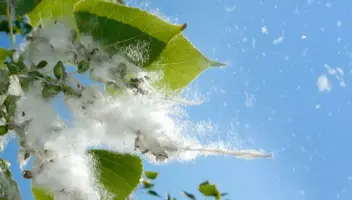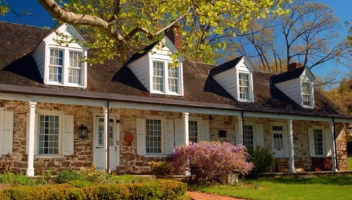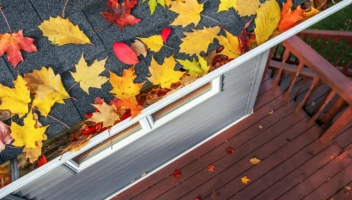9 Fastest-Growing Shade Trees
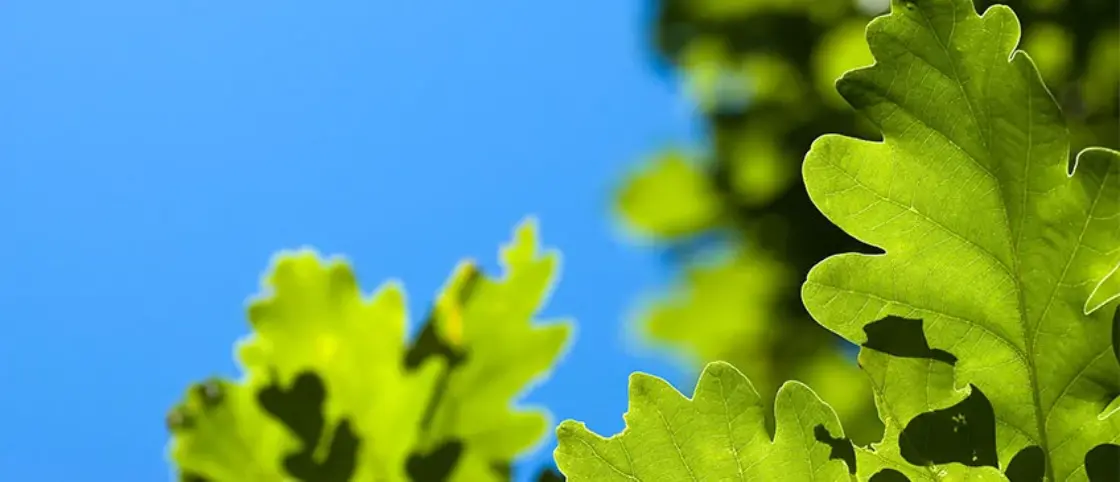
Searching for ways to save money on cooling costs? Here’s an idea — plant a fast-growing shade tree near your home! Trees help block the sun from your home’s exterior and windows, creating cooler temperatures indoors.
Fast-growing shade trees grow 4 to 8 feet per year and reach maturity quickly, depending on the type. Shade tree growth rates vary by species and are best suited for particular zones with climates under extreme minimum temperatures.
To choose the right tree variety for your home, you’ll need to learn about growth rates, recommended sunlight, and determine which plant hardiness zone you live in.
Our Favorite Fast-Growing Shade Trees
Before adding new trees to your landscaping, you’ll need to learn about each species’ care needs, preferred climate zones, and growth rates. Get to know 9 of our favorite fastest-growing shade tree varieties and what each has to offer, so you can make the most informed decision for your landscaping.
1. Hybrid Poplar
Hybrid poplar trees grow in an oval shape at a very quick rate of 5 to 8 feet a year. They feature triangle-shaped leaves that are about 3 to 6 inches long and 4 to 5 inches wide with rounded teeth. Their spreading canopies are effective in blocking sunlight and can save you a significant amount of money on cooling.
Zones: 3-7
Growth Rate: 5 to 8 feet a year
Care: Plant trees in areas with full sunlight and well-drained, moist soil. Prune in the winter and remove dead or damaged limbs as the tree matures.
2. American Sycamore
American sycamore trees generate large, deep green leaves that are usually found in areas with a lot of moisture. Due to the fact that these trees cannot tolerate droughts, they must be planted in areas where water will always be available. American sycamores stand out among other shade trees because they resist salty soils and pollution and can withstand hail, wind, and other inclement weather.
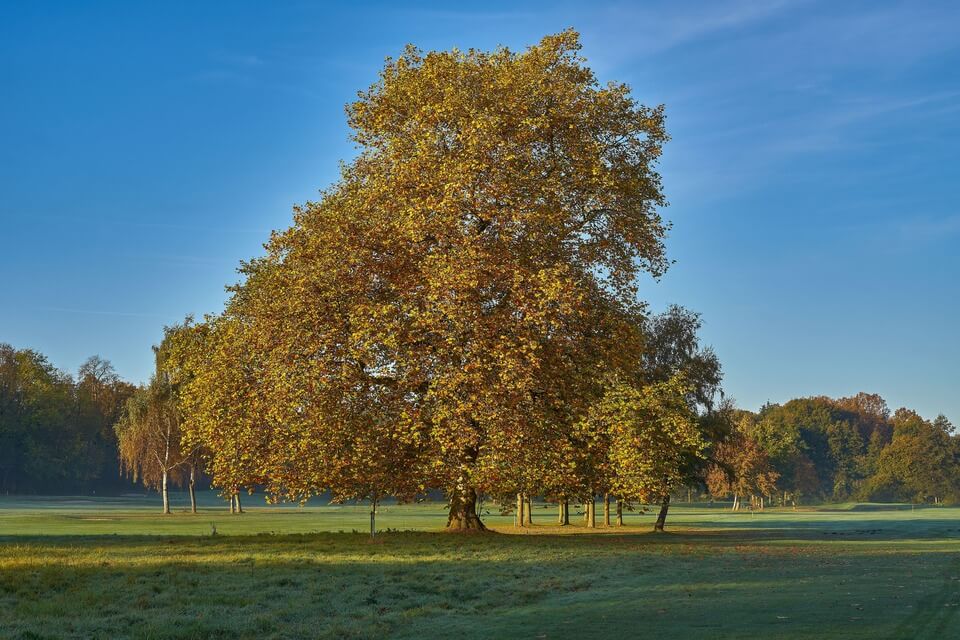
Zones: 4-9
Growth Rate: Up to 6 feet per year
Care: Plant in a location that gets 6 to 8 hours of sunlight daily. Water well in the first 3 years, especially if it rains less than one inch per week.
3. Red Maple
Admired for their fiery red foliage in the fall, red maple trees are excellent providers of shade. Although they grow best in moisture, they can thrive in a variety of weather conditions, including neutral, acidic, and wet soil as well as extreme temperature fluctuations. These highly adaptable trees are also transplanted and grow up to 60 feet.
Zones: 4-9
Growth Rate: 1 to 2 feet per year
Care: Plant in well-drained soil in full to partial sunlight areas that receive 4 to 8 hours of daily sunlight. Water weekly and increase watering in the summer months. Fertilize twice a month after the winter dormancy and once a month in the summer.
4. Nuttall Oak
Also known as pin oak or red oak, the Nuttall oak is the fastest-growing oak tree. In addition to providing a leafy, dark green canopy, it can give animals such as deer and squirrels a large supply of acorns each year. Since Nuttall oak trees won’t invade water lines, do not develop surface roots, and contain leaves that leave a substantial amount of headroom beneath their branches, they are ideal for the front yard, patio, lawn, or street.
Zones: 6-9
Growth Rate: 1 to 3 feet per year
Care: Water frequently the first year and fertilize monthly.
5. Weeping Willow
The weeping willow stands out from other shade trees because of its ground-sweeping branches and long, skinny leaves. Weeping willow trees typically grow between 30 and 40 feet. While they grow exceptionally well near moisture, they can tolerate droughts. They also provide nests for small birds as well as food for deer, rabbits, and beavers.
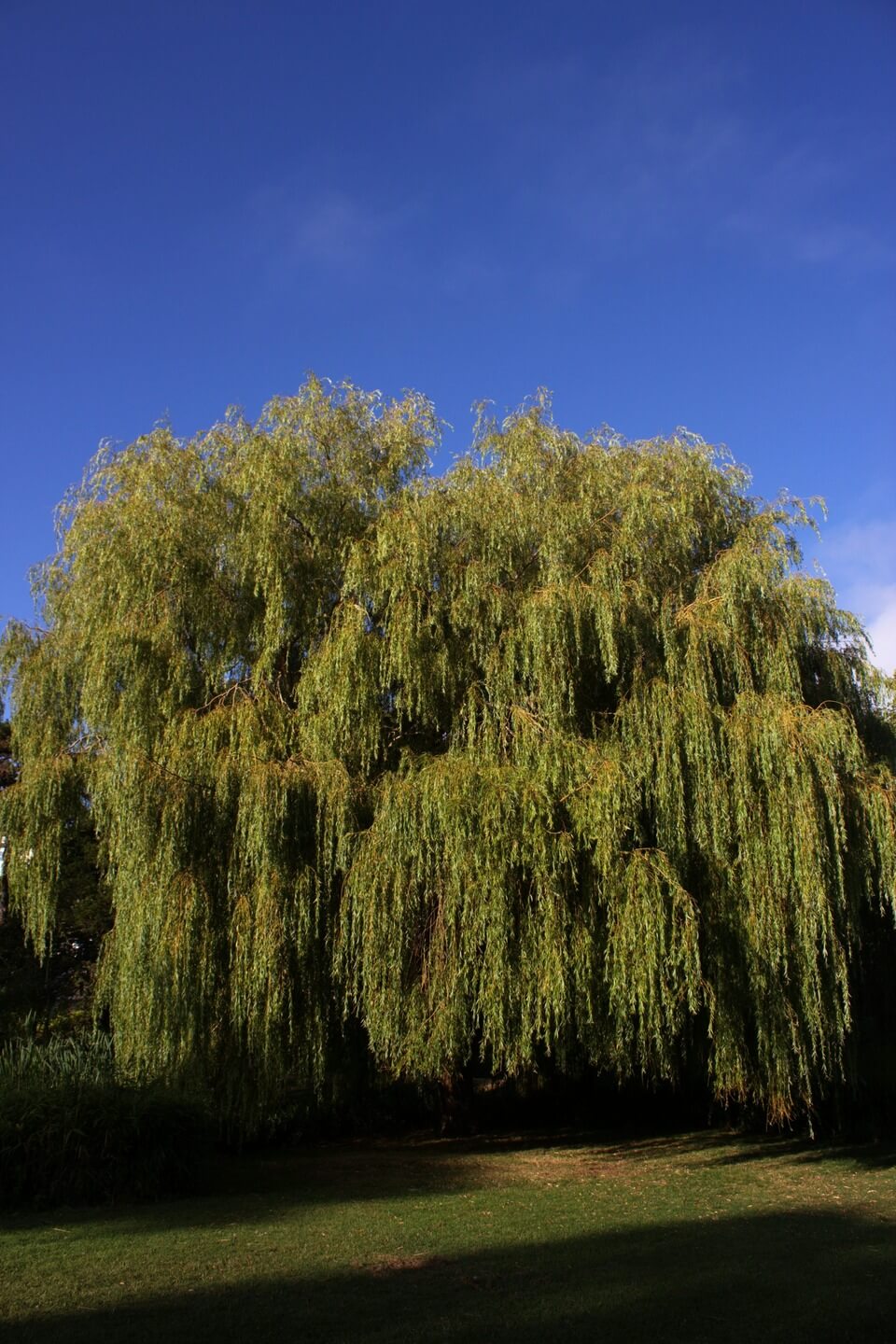
Zones: 4-9
Growth Rate: 3 to 4 feet per year
Care: Plant in full sun to partial shade, 4 to 8 hours daily. Select a location with well-drained soil and away from septic systems. Water once or twice weekly in the first year. Prune the top of the tree in early spring.
6. Tulip Poplar
Popular for their striking yellow flowers that resemble large tulips, these quick shade trees add a pop of fall color to any yard. These deciduous trees’ leaves turn golden yellow for the perfect fall color and are a favorite for beavers and porcupines who use their wood. Tulip tree flowers also attract pollinators and hummingbirds. They grow to an oval shape and have square-lobed leaves.
Zones: 4-9
Growth Rate: 2 to 3 feet tall per year
Care: Plant in well-drained soil conditions with partial to full sunlight, 4 to 8 hours daily. It’s recommended to avoid areas with direct afternoon sun. Water once or twice weekly in summer months and once or twice bi-weekly in cooler months.
7. River birch
Known for their unique peeling colorful bark, River Birch trees are beloved for their disease resistance and ability to adapt to many different types of soil conditions. Both wet and dry soils are fine for this tree, and it can withstand strong winds and droughts. River birch trees are ideal for homes in challenging weather and provide beautiful yellow leaves in the fall.
Zones: 4-9
Growth Rate: 2 to 3 feet tall per year
Care: Plant in an area with full sunlight, 6 to 8 hours, with well-drained soil. Water weekly with a slow flow of water and increase watering daily during the summer months.
8. Silver maple
Named after its leaves that have a shimmery silver undertone, the silver maple can grow almost anywhere. A soggy yard isn’t a problem for the Silver Maple. Young trees’ bark also has a silver sheen. Their buds are a favorite food source for squirrels, and their tree canopies are popular for creating focal points on street borders.
Zones: 3-9
Growth Rate: 1 to 3 feet tall per year
Care: Plant in any soil conditions in full or partial sunlight, with 4 to 8 hours of direct sunlight daily. Silver Maple can tolerate wet to dry conditions, but watering weekly is recommended for young trees.
9. Northern Catalpa
This perennial deciduous tree grows so quickly that European settlers used it to produce fence posts. The large oval-shaped leaves of the northern catalpa are its signature, and it produces large, showy bell-shaped white flowers in the spring. Due to producing large amounts of flowers and seed pods, these trees may require a little extra cleanup. Northern Catalpa trees are highly adaptable and hardy, making them an ideal choice for many homeowners.
Zones: 4-8
Growth Rate: 1-3 feet tall per year
Care: Plant in well-drained soil in a location with full sun to partial sunlight. Clean up flower petals, seed pods, and leaves that drop.
Create Natural Shade Around Your Home with Fast-Growing Trees
Now that you’ve learned about nine cultivars of the fastest-growing shade trees, selecting one or a few to fit your home and growing zone should be easier.
While this list doesn’t include every shade tree, it’s worth giving honorable mentions to the Japanese Zelkova as a great alternative to an elm with a lovely vase-shape. We would be remiss not to note the American Sweetgum, which is beautiful but sheds frequently, or the Dawn Redwood for its large shade tree size and speedy growth rate.
With this knowledge in hand, creating more shade around the home and saving on energy costs has never looked better. We’ve even put together a handy landscape maintenance checklist to help you get ready to plant new trees.
Frequently Asked Questions
What’s the quickest-growing shade tree?
The hybrid poplar is recognized as one of the quickest-growing when it comes to shade trees. With an impressive growth rate that can reach up to 8 feet a year, it’s no wonder the hybrid poplar is a popular tree for providing shade. With the right planting location, they can start blocking sunlight and help you save on energy faster. Their ability to tolerate cold climates and survive freezing temperatures makes them a versatile tree. If you’re looking to add shade and value to the home quickly, the hybrid poplar is a strong option.
Are poplar roots invasive?
Yes, poplar trees are fast growers, and so are their roots. Their fast growth causes roots to spread, which can damage underground structures such as pipes and foundations. Roots seek out water as they grow, which can cause them to get too close to pipes. Existing foundation issues can be made worse by the quickly growing roots that can destabilize soil. The roots of a poplar tree can grow three times its height. Before planting a poplar tree, consider the location and condition of underground structures.
Which tree grows the fastest in drought?
Out of the fastest-growing shade trees we discussed, the weeping willow can grow quickly with less moisture. For a drought-tolerant tree that grows quickly, the Chitalpa Tree is a hybrid of the desert willow tree and the catalpa. They can grow several feet a year in dry conditions and have dense branches that form a broad oval crown. Their flowers can range from a soft white to a striking pink.
What are the best shade trees for small areas?
Depending on the zone, maple trees are well-suited for small spaces, whereas large shade trees are not. Compact spaces may require trees with slower and smaller growing root systems to avoid overwhelming or damaging the yard. The Japanese maple, for example, provides shade with gorgeous red or vibrant green foliage with well-behaved low-maintenance roots. Homes with small yards, foundations, or nearby walls are perfect for Japanese maple trees. Maples in small spaces still run the risk of leaves finding their way into the gutter, and may require gutter guards for maple spinners.
Which fast-growing shade trees are best for my climate zone?
If you’re looking for a shade tree that can grow just about anywhere, look no further than the red Maple. For more specifics, find out which fast-growing shade trees are best for where you live, by identifying which climate zone you’re in. Start by visiting the USDA Plant Hardiness Zone Map for homes in North America, and research native trees in your area. This map uses average annual minimum winter temperature to help you identify which plants are best suited for your climate. Or check out our guide on the worst trees for your home.
